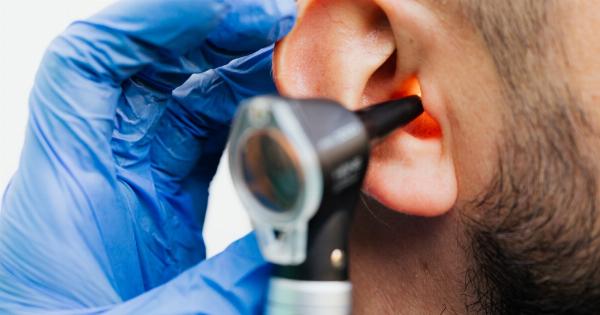Vertigo is a sensation of spinning or dizziness that often occurs when there is an issue with the inner ear or the brain. It can be quite debilitating and can significantly affect a person’s daily life.
Balance loss, on the other hand, refers to a disturbance in the body’s ability to maintain equilibrium, resulting in unsteadiness and a lack of coordination.
The Role of the Inner Ear in Balance
The inner ear plays a crucial role in maintaining balance in the body. It contains structures called semicircular canals that are filled with fluid and tiny hair-like sensors.
These sensors detect the movement of the head and send signals to the brain, which then helps us maintain balance.
Common Inner Ear Disorders That Cause Vertigo and Balance Loss
There are several inner ear disorders that can result in vertigo and balance loss. Some of the most common ones include:.
- Ménière’s disease: This disorder affects the inner ear’s drainage system, leading to a buildup of fluid. It is characterized by episodes of severe vertigo, hearing loss, tinnitus (ringing in the ears), and a feeling of fullness in the affected ear.
- BPPV (Benign Paroxysmal Positional Vertigo): BPPV occurs when tiny calcium crystals in the inner ear break loose and migrate into the semicircular canals. This can cause sudden and brief episodes of vertigo triggered by certain head movements.
- Vestibular neuritis: Also known as vestibular neuronitis, this condition involves inflammation of the vestibular nerve, leading to vertigo and imbalance. It is commonly caused by a viral infection.
- Labyrinthitis: Labyrinthitis is characterized by inflammation of the labyrinth, a part of the inner ear that houses the semicircular canals and the cochlea. Along with vertigo, it can also cause hearing loss, tinnitus, and nausea.
- Otosclerosis: Otosclerosis is a condition that affects the movement of the tiny bones in the middle ear. In some cases, it can also impact the inner ear, resulting in balance problems and vertigo.
Diagnosing Inner Ear Disorders
Diagnosing inner ear disorders requires a thorough evaluation by a trained healthcare professional, typically an otolaryngologist or an audiologist. The diagnostic process may involve:.
- Medical history review: The healthcare provider will inquire about the patient’s symptoms, their duration and severity, and any triggers that seem to worsen or alleviate the symptoms.
- Physical examination: A physical examination will be conducted to evaluate the patient’s balance, eye movements, and overall neurological functions.
- Hearing tests: Since many inner ear disorders are associated with hearing loss, various hearing tests may be performed to assess the patient’s auditory function.
- Vestibular tests: These tests are specifically designed to evaluate the inner ear’s balance function. They can include videonystagmography (VNG), rotary chair testing, and caloric testing.
- Imaging tests: In certain cases, imaging tests such as magnetic resonance imaging (MRI) or computed tomography (CT) scans may be recommended to rule out other possible causes of symptoms.
Treating Inner Ear Disorders
The treatment approach for inner ear disorders depends on the specific condition and its underlying cause. Some common treatment options include:.
- Medications: Medications may be prescribed to alleviate symptoms such as vertigo, nausea, and vomiting. These can include anti-vertigo medications, antihistamines, or benzodiazepines.
- Vestibular rehabilitation therapy (VRT): VRT is a specialized form of physical therapy that focuses on retraining the brain to adapt to the vestibular system’s dysfunction. It often involves exercises and maneuvers that gradually help improve balance and reduce vertigo episodes.
- Surgery: In severe cases or when conservative treatments fail, surgical intervention may be considered. Surgical options vary depending on the specific disorder but can include procedures to remove the inner ear structures causing the symptoms or to restore proper fluid drainage.
- Hearing aids or cochlear implants: For individuals with hearing loss associated with inner ear disorders, hearing aids or cochlear implants may be recommended to improve hearing function.
- Lifestyle modifications: Lifestyle changes, such as reducing salt intake, avoiding caffeine and alcohol, and managing stress, can sometimes help reduce symptoms and improve quality of life for individuals with inner ear disorders.
Preventing Inner Ear Disorders
While not all inner ear disorders can be prevented, there are certain measures that can promote inner ear health and reduce the risk of developing balance issues. These include:.



























